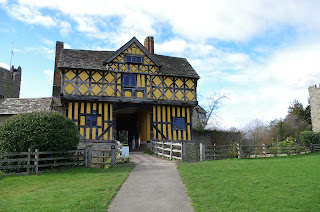Houses of Interest: Highlands & Islands

The final instalment of the ECWtravelogue's summer expedition to Scotland. This time the focus is on the Highlands and Islands. Lochaber axes, West Highland Museum, Fort William Mingary Castle seen from the Oban-Castlebay ferry through a very long lens C13tth/C14th Mingary Castle was garrisoned by the Covenanters. It fell to the Irish Brigade in 1644. The Castle fell into disrepair and had been abandoned for many years before being renovated in 2013-6. The Castle is now a boutique hotel. Inverlochy Memorial The second Battle of Inverlochy was fought on the outskirts of modern Fort William. Montrose defeated and almost completely destroyed the forces of Archibald Campbell, 1st Marquess of Argyll, who had been camped near the walls of Old Inverlochy Castle . A memorial is located on North Road, opposite the car park for Aldi/M&S Foodhall. A stile located near the bus stop (located towards the roundabout) leads to a short, steep path up to the memorial. Old Inverloc...



